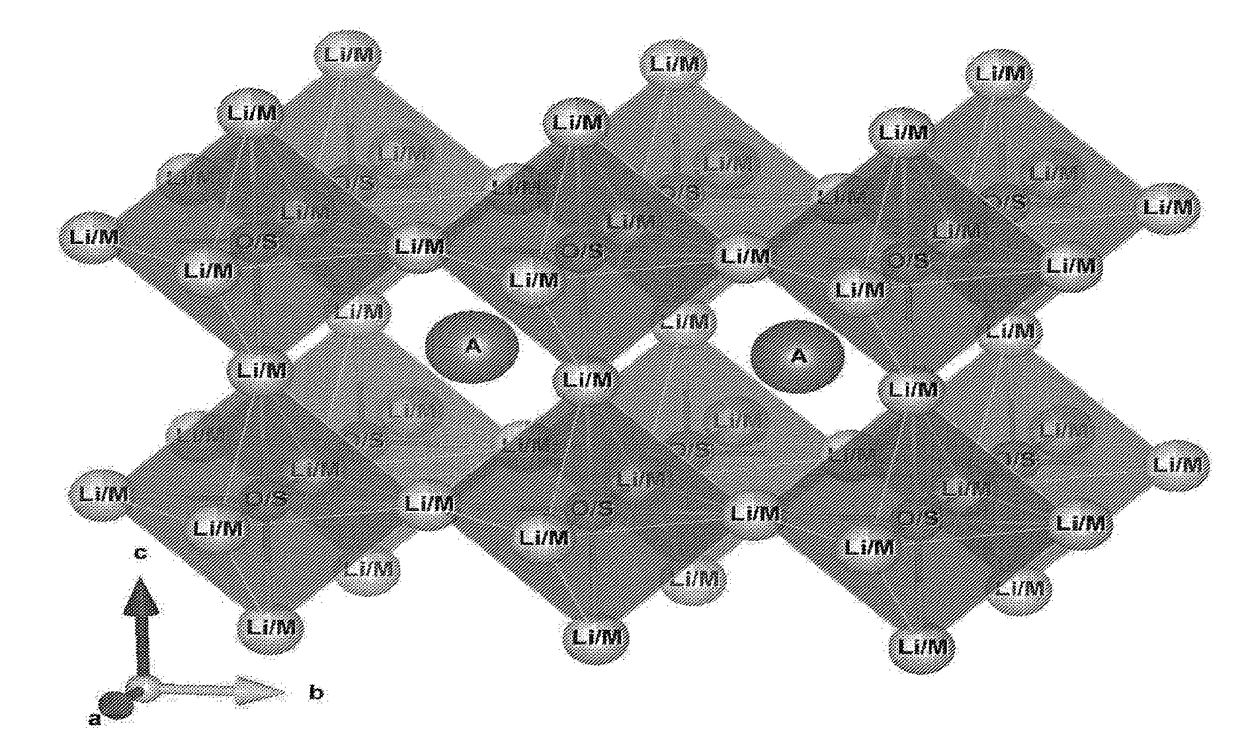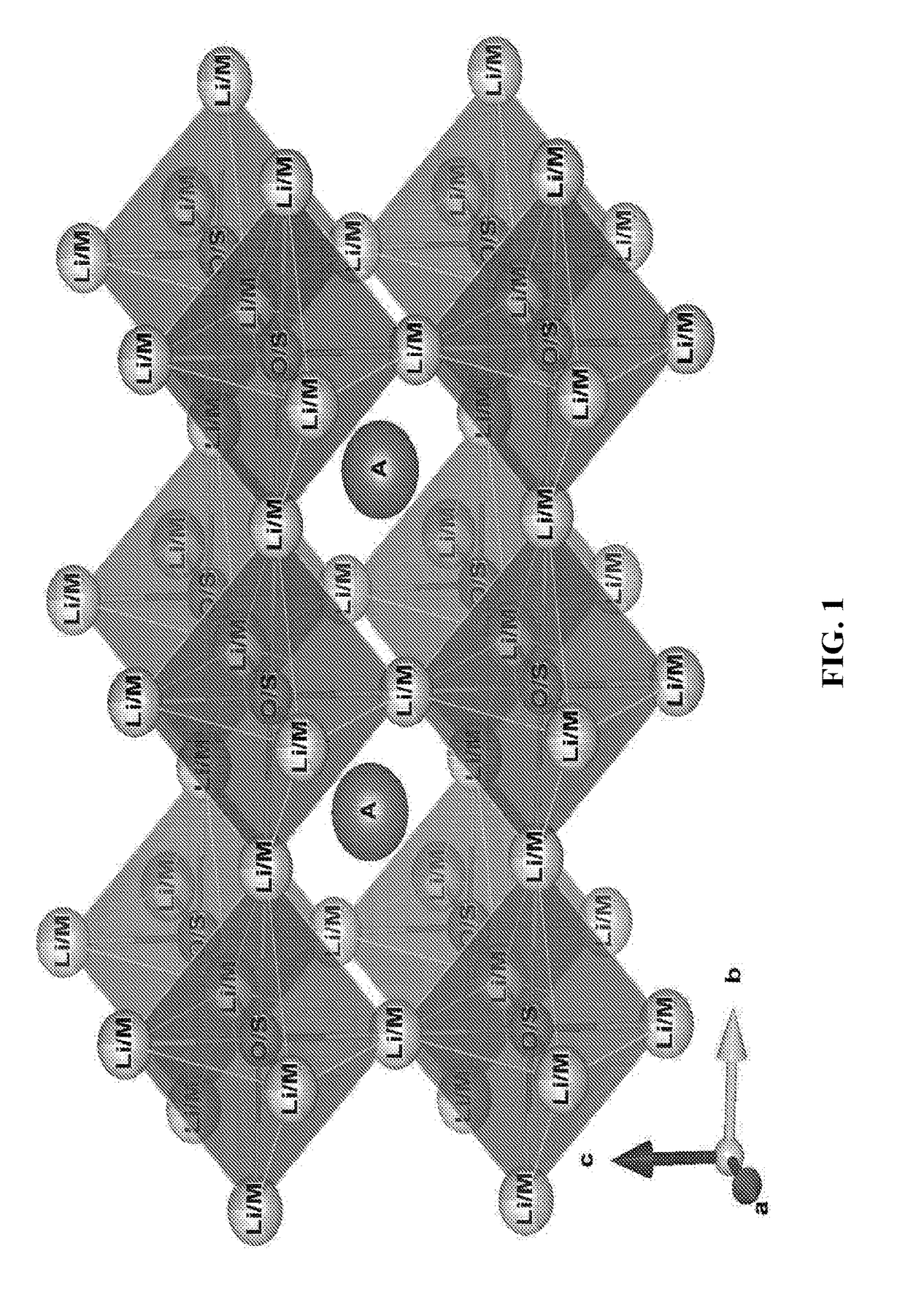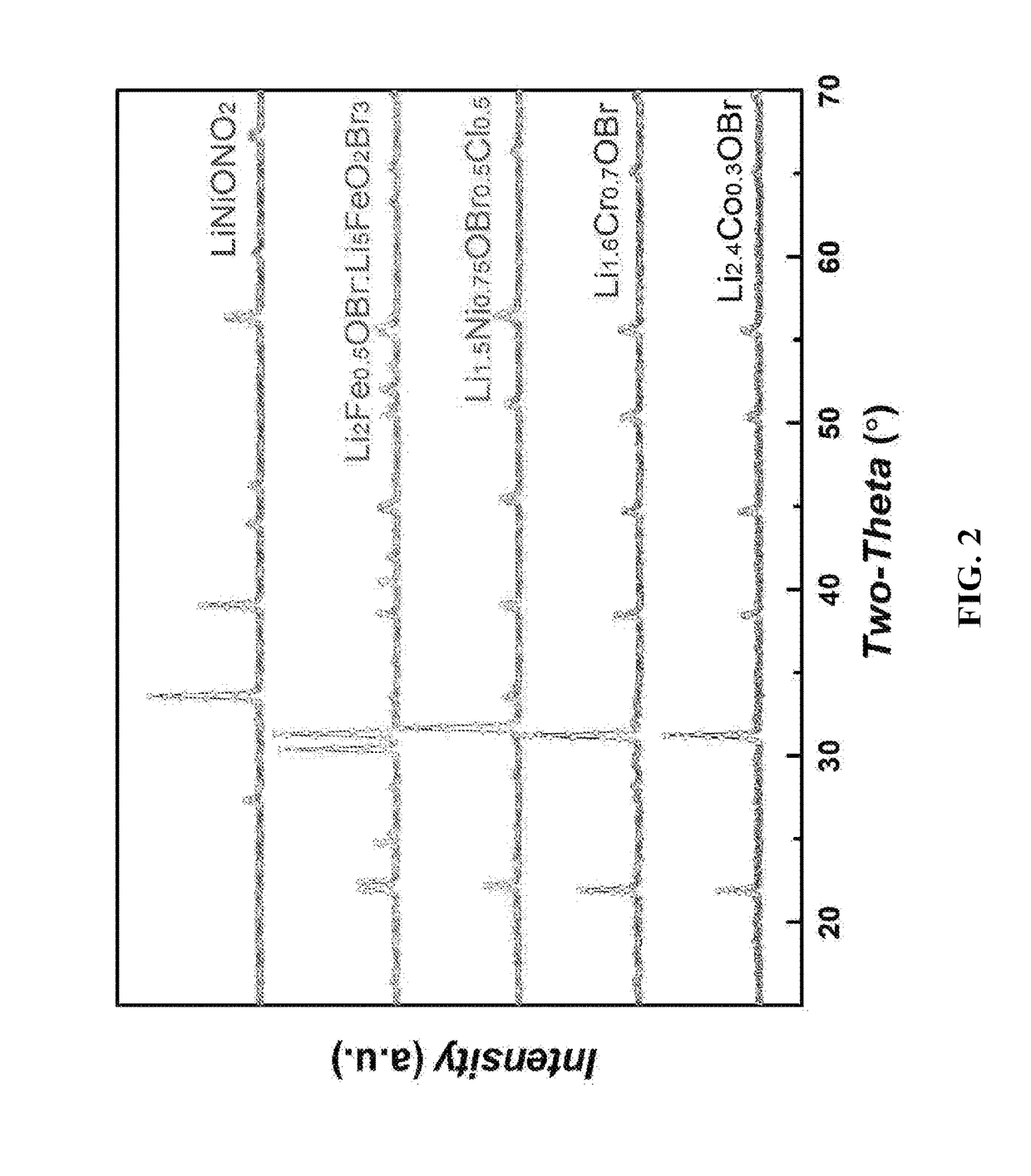Transition-metals doped lithium-rich Anti-perovskites for cathode applications
a lithium-rich, anti-perovskite technology, applied in the direction of electrochemical generators, cell components, electrolytic capacitors, etc., can solve the problems of low power and high cost, impede the development of high-performance solid-state batteries for practical applications, and thin-film approaches suffer from low capacity, power and high cost. , to achieve the effect of enhancing lithium transport and diffusion rate, favorable structure flexibility, and favorable compositional and structural flexibility
- Summary
- Abstract
- Description
- Claims
- Application Information
AI Technical Summary
Benefits of technology
Problems solved by technology
Method used
Image
Examples
example a
[0050]Preparation of Li2.4Co0.3OBr: 0.241 g Li2O, 0.259 g CoO and 1 g LiBr were weighted and ground together in a glovebox with oxygen2O2.4Co0.3OBr were obtained by repeating the grinding and heating processes for 2 times. The overall synthesis approach of a batch of samples required about 24 hours.
[0051]Powder X-ray diffraction data were collected at room temperature (25° C.) on a Bruker-AXS / D8 ADVANCE diffractometer using a rotating anode (Cu Kα, 40 kV and 40 mA), a graphite monochromator and a scintillation detector. Before measurements, the samples were enclosed in a sealed sample holder under Ar atmosphere to avoid moisture absorption. An X-ray diffraction pattern of the reaction product was dominated by the anti-perovskite Li2.4Co0.3OBr. While in some cases, additional and weaker diffraction lines also appeared that matched those for the unreacted raw materials Li2O, LiBr or CoO (<5% by molar ratio). Usually, impurities can be avoided simply by repeat the grinding and heating ...
example b
[0055]Preparation of Li1.6Cr0.7OBr: 0.226 g Li2O, 1 g CrBr2, and 0.128 g CrO were weighted and ground together in an Ar atmosphere protected glovebox for several minutes. The resulting fine powder was placed in an alumina crucible then put into the furnace in the same glovebox with oxygen2O1.6Cr0.7OBr were obtained by repeating the grinding and heating processes for 3 times. The overall synthesis approach of a batch of samples was about 30 hours.
[0056]Powder X-ray diffraction data were collected at room temperature (25° C.). Before measurements, the samples were enclosed in sealed sample holder under Ar atmosphere to avoid moisture absorption. An X-ray diffraction pattern of the reaction product was dominated by the anti-perovskite Li1.6Cr0.7OBr. The lithium ionic conductivity of the product Li1.6Cr0.7OBr was obtained from electrochemical impedance measurements. The samples were melted within two gold foils (thickness: 100 μm) at about 480° C. in inert atmosphere, and followed by pr...
example c
[0057]Preparation of Li1.5Ni0.75OBr0.5Cl0 5: 0.205 g Li2O, 0.5 g NiBr2, 0.296 g NiCl2 and 0.171 g NiO were weighted and ground together in an Ar atmosphere protected glovebox for several minutes. The resulting fine powder was placed in an alumina crucible and then placed in the furnace within the same glovebox. The sample was firstly heated to 350° C. at a heating rate of 1.5° C. / min, then to 450° C. at a heating rate of 10° C. / min. After holding at the highest reacting temperature for 6 hours, the samples were cooled to room temperature naturally. Phase-pure powders of Li1.5Ni0.75OBr0.5Cl0.5 were obtained by repeating the grinding and heating processes for 3 times. The overall synthesis approach of a batch of samples took about 24 hours.
[0058]Powder X-ray diffraction data were collected at room temperature (25° C.). Before measurements, the samples were enclosed in sealed sample holder under Ar atmosphere to avoid moisture absorption. An X-ray diffraction pattern of the reaction pr...
PUM
| Property | Measurement | Unit |
|---|---|---|
| thickness | aaaaa | aaaaa |
| thickness | aaaaa | aaaaa |
| thicknesses | aaaaa | aaaaa |
Abstract
Description
Claims
Application Information
 Login to View More
Login to View More - R&D
- Intellectual Property
- Life Sciences
- Materials
- Tech Scout
- Unparalleled Data Quality
- Higher Quality Content
- 60% Fewer Hallucinations
Browse by: Latest US Patents, China's latest patents, Technical Efficacy Thesaurus, Application Domain, Technology Topic, Popular Technical Reports.
© 2025 PatSnap. All rights reserved.Legal|Privacy policy|Modern Slavery Act Transparency Statement|Sitemap|About US| Contact US: help@patsnap.com



